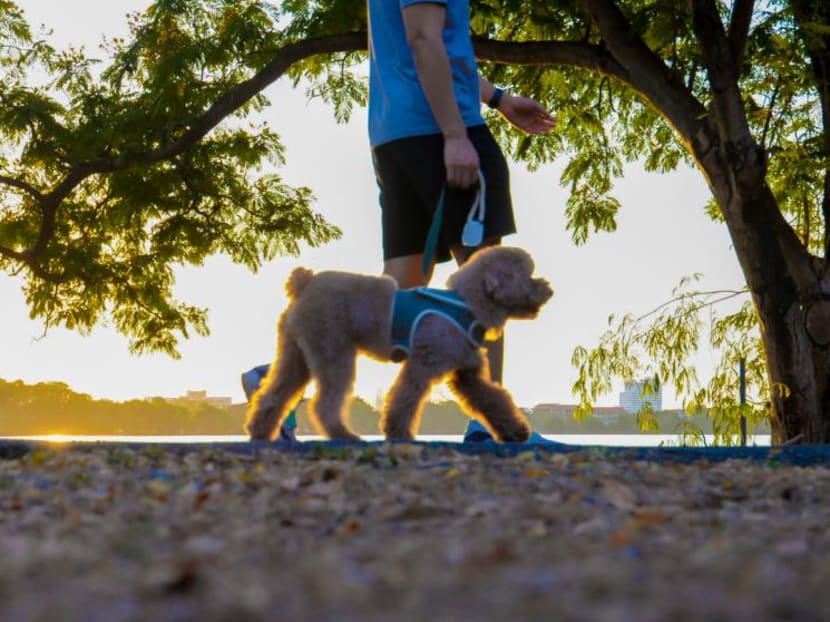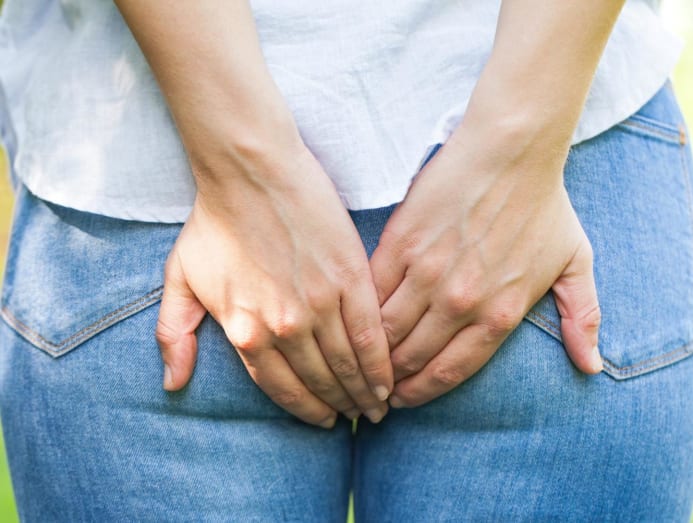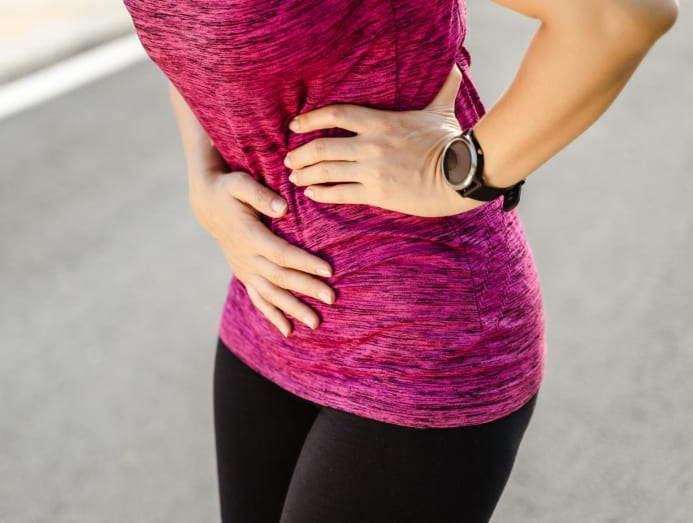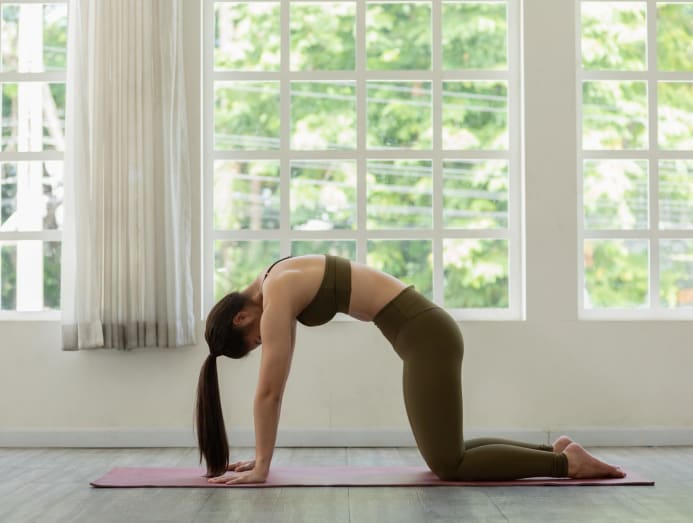'Fart walking' after a meal is the latest health trend – but does it actually work?
A post-meal walk – fart or no fart – is a simple, effective wellness habit worth adopting.

(Art: iStock/Aree Thaisagul)

This audio is generated by an AI tool.
Of all the wellness trends that have emerged from TikTok, "fart walking" is perhaps worth tooting about. If you’re wondering just what in the world has your social media algorithm served up, yes, it is now cool to unabashedly break wind while taking a post-meal stroll. At least according to people like this TikToker:
Farting while walking is the most natural thing to do, according to Dr Edward Cheong, a senior upper gastrointestinal surgeon with PanAsia Surgery. “Fart walking is a playful, non-scientific term used to describe the act of passing gas while walking. It’s just a funny way to talk about something that happens to everyone when you’re moving around, especially after eating or when your digestive system is active.”
But what if you’re too uptight to even let go of the tiniest squeak of gas in public? Would that cancel out the benefits of fart walking? Before you pooh-pooh the activity, here’s a look at the advantages of a post-dinner stroll (with or without breaking wind).
WHAT DOES WALKING DO FOR DIGESTION?
Walking after dinner does more than help you pass gas and relieve that bloated feeling. “Walking can help prevent acid reflux or heartburn by keeping you upright and aiding in gastric emptying,” said Dr Cheong.

Jaclyn Reutens, a dietitian with Aptima Nutrition & Sports Consultants, agreed. “Going to bed soon after a full meal increases the risk of heartburn. By stimulating digestion through a walk, there’s lesser food in your stomach and this can reduce the risk of heartburn.”
Also, fart walking improves digestion by stimulating peristalsis, which is the contraction of the digestive tract to move food along the gastrointestinal system, said Reutens.
In diabetics, “walking after a meal helps to reduce insulin resistance and prevent spikes in blood sugar levels by using up the glucose in your meal, instead of allowing the glucose to stay in your bloodstream”, said Reutens.
ARE THE BENEFITS ONLY THERE AFTER A POST-MEAL WALK?
“Walking at any time of the day has benefits,” said Reutens. “The added benefit of walking after a meal helps your muscles use up the glucose in the meal that was just consumed more efficiently. This leaves less glucose floating around in the bloodstream and keeps blood sugar levels in check.”
There are benefits for non-diabetics, too, said Dr Cheong. “Walking after meals specifically targets your body’s immediate metabolic response to food intake, enhancing nutrient absorption and utilisation,” he said.

Moreover, “regular walks contribute to cardiovascular health, improving circulation and overall heart function”. “A post-meal walk can become a healthy routine that integrates seamlessly into daily life, making it easier to maintain consistency compared to random walks during the day,” added Dr Cheong.
WHO BENEFITS THE MOST FROM FART WALKING?
“Everyone, even the elderly can do it,” said Reutens. If you have bloating problems from a digestive condition such as irritable bowel syndrome, lactose intolerance or small intestinal bacterial overgrowth, you’ll appreciate the gas-relieving benefit even more, said Dr Cheong.
The same goes for gassy individuals who consume a lot of fibre, carbonated drinks or gas-inducing beans and cruciferous vegetables, or just have air-introducing habits such as eating quickly or drinking through straws, said Dr Cheong.
He added that middle-agers also make the list due to their diminished digestive efficiency and muscle tone changes that sometimes lead to more gas.
HOW SOON AFTER EATING CAN YOU WALK? AND HOW LONG FOR?
Start walking about 10 to 15 minutes after eating to maximise the benefits, recommended Dr Cheong. “This timing helps prevent the onset of bloating and heartburn, and it also aids in regulating blood sugar levels effectively.”
As for the duration, a moderate intensity walk of about 20 to 30 minutes is typically recommended. “Even a short 10-minute walk can be beneficial but if you have the time, aim for around 20 to 30 minutes for even greater advantages for digestion and overall well-being,” he said.

ARE THE BENEFITS GONE IF YOU CAN’T BRING YOURSELF TO FART IN PUBLIC?
Not at all, said Dr Cheong. “Even if you’re not actively passing gas while walking, you’re still aiding digestion, promoting blood sugar regulation and enhancing overall metabolic function. The movement itself helps with these processes, regardless of whether you’re farting or not.”
WHAT IF YOU GET A SHARP PAIN IN YOUR DIAPHRAGM, BELOW YOUR RIBCAGE?
That is a stitch and is also known as exercise-related transient abdominal pain, said Reutens. “It is unclear what truly causes a stitch but it is not serious and can be resolved by slowing down your pace and hydrating with electrolytes.”
Dr Cheong recommended inhaling deeply through your nose and exhaling slowly through your mouth to help relax the diaphragm. “If the stitch is on your right side, try exhaling as your left foot hits the ground and vice versa. You can also gently massage the area where you feel the stitch.”
Maintaining good posture while walking may also help to reduce straining the diaphragm and the surrounding muscles, he said. “If you frequently get stitches, consider a lighter meal before walking and gradually increase the intensity of your post-meal activity.”

WHAT ABOUT ON DAYS WHEN YOU CAN’T GO FOR A WALK?
“You can walk around in your home,” suggested Reutens. “Some movement is better than no movement. There is no definite number of steps to clock but it’s good to move after a meal, especially if it was a heavy one.”
Dr Cheong suggested doing simple stretches such as reaching your arms overhead and twisting your torso gently. Or do a few yoga poses like Cat-cow or Child’s Pose. Light marching or stepping on the spot can also get your body moving and encourage digestion.
Alternatively, try gently massaging your abdomen in a circular motion to help move gas along the digestive tract and relieve bloating, he said. Even something as simple as sitting up straight or standing for a while after eating can help prevent heartburn and encourage the natural movement of food, he added.

IS THERE ANYTHING TO KEEP IN MIND WHEN FART WALKING?
Pace yourself, said Dr Cheong. “Remember, you’re not aiming for a high-intensity workout, just a gentle walk to aid digestion.”
To do that, start at a pace that is comfortable, said Reutens. “Even a 10-minute walk has some benefits. Then, work your way up to 30 minutes,” she recommended.
“Drink some water before you start but avoid over-drinking before walking to prevent discomfort,” said Dr Cheong. “The key is to enjoy the walk, help your body digest and reap the benefits without pushing yourself too hard.”
And lastly, maybe warn others not to walk behind you.





